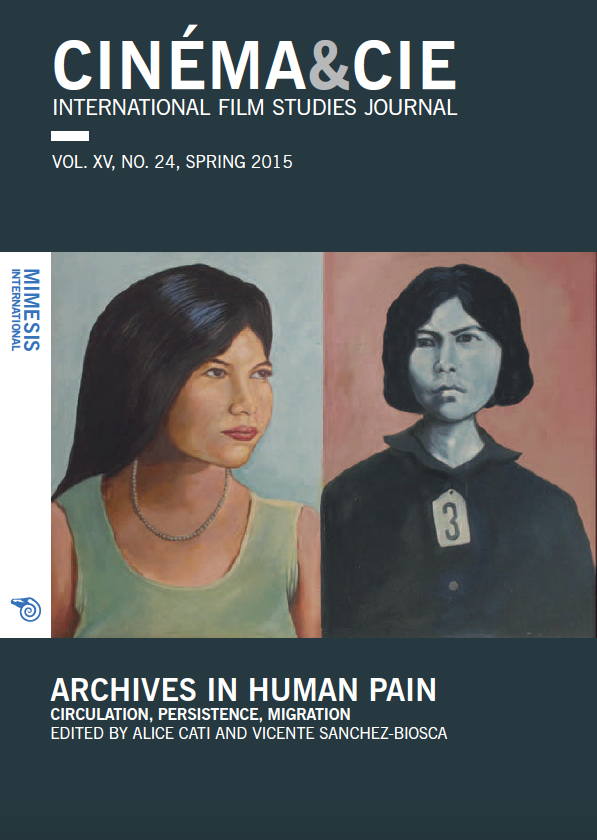History and Progress in Buried in Light and Empires of Tin:The Archive of Pain in the Oeuvre of Jem Cohen
Abstract
This paper explores the use of archival images in Jem Cohen’s Buried in Light (Central and Eastern Europe in Passing, 1994), and Evening’s Civil Twilight in Empires of Tin (2007-2008) in order to read the development of his reflections on history and memory. The archive is intended “in its concrete manifestation as a collection of audiovisual documents of the past and in its ontological dimension, indicating social and cultural processes of remembering and forgetting” (Noordegraaf, 2011). Strongly influenced by Walter Benjamin, Cohen conceives history not as a chronological line, but as a collection of traces (shots) mapped out by the documentary collagist (filmmaker) that simultaneously speaks about the past and the future in a layered present tense (editing). Mainly as an essay film form, his work is constructed by film fragments of places and people that build an unofficial history with a geographical form. Cohen calls such way of collecting shots “the archive of the feet” (2000). Starting with his first “historical” film/video, This Is a History of New York (The Golden Dark Age of Reason, 1987), the paper analyzes Cohen’s conception of history and progress through the archive of human pain, and in relation to Benjamin’s work.






